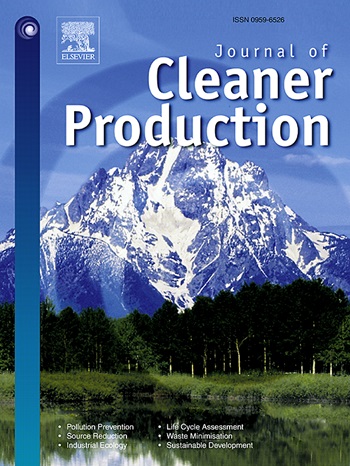Production of renewable fuels and platform chemicals from carbon dioxide using microalgae: Economic and environmental perspective
IF 10
1区 环境科学与生态学
Q1 ENGINEERING, ENVIRONMENTAL
引用次数: 0
Abstract
Microalgae are a promising feedstock for large-scale biorefineries with integrated processes, such as cultivation, harvesting, and dewatering, to produce biochemicals and biofuels. Microalgae can absorb carbon dioxide (CO2) and use various nutrients found in water, such as nitrates and phosphates, to increase their biomass. The production of succinic acid (SA), a cost-effective platform chemical that can be produced through anaerobic fermentation using microalgae, uses CO2 efficiently. This study presents a techno-economic analysis (TEA) that compares Strategy A, which produces SA, ammonium sulfate (AMS), diesel blendstock (DB), and polyurethane (PU), with Strategy B, which produces SA, AMS, and DB. Process variations are also analyzed to determine their impact on succinic acid pricing. Heat integration is incorporated, which reduces heating demands by 79.8% and cooling needs by 63.8%. The economic viability of the developed process with a minimum selling price (MSP) of 2701 USD/t for SA is demonstrated, considering the market range of 2700–3710 USD/t, Furthermore, cradle-to-gate life-cycle assessment is used to evaluate the environmental impacts of Strategies A and B in comparison to the conventional fossil-fuel-based SA market. Strategy A was found to exhibit the lowest environmental impact among other succinic-acid production methods, with a low global warming potential of 0.03 kg CO2 eq/kg SA and a negative fossil-resource consumption of −0.85 kg oil eq/kg SA.


利用微藻从二氧化碳中生产可再生燃料和平台化学品:经济和环境观点
微藻是大型生物精炼厂的一种有前景的原料,具有综合的过程,如种植、收获和脱水,以生产生物化学品和生物燃料。微藻可以吸收二氧化碳(CO2),并利用水中发现的各种营养物质,如硝酸盐和磷酸盐,来增加生物量。琥珀酸(SA)是一种具有成本效益的平台化学品,可以通过微藻厌氧发酵生产,有效地利用了二氧化碳。本研究提出了一项技术经济分析(TEA),将生产SA、硫酸铵(AMS)、柴油混合料(DB)和聚氨酯(PU)的策略a与生产SA、AMS和DB的策略B进行了比较。还分析了工艺变化,以确定其对琥珀酸定价的影响。采用热集成,减少了79.8%的供暖需求和63.8%的制冷需求。考虑到2700-3710美元/吨的市场范围,以最低销售价格(MSP)为2701美元/吨的SA开发过程的经济可行性得到了证明。此外,与传统的化石燃料为基础的SA市场相比,使用从摇篮到gate的生命周期评估来评估策略a和B的环境影响。研究发现,在其他琥珀酸生产方法中,策略A的环境影响最小,其全球变暖潜势较低,为0.03 kg CO2当量/kg SA,化石资源消耗为- 0.85 kg石油当量/kg SA。
本文章由计算机程序翻译,如有差异,请以英文原文为准。
求助全文
约1分钟内获得全文
求助全文
来源期刊

Journal of Cleaner Production
环境科学-工程:环境
CiteScore
20.40
自引率
9.00%
发文量
4720
审稿时长
111 days
期刊介绍:
The Journal of Cleaner Production is an international, transdisciplinary journal that addresses and discusses theoretical and practical Cleaner Production, Environmental, and Sustainability issues. It aims to help societies become more sustainable by focusing on the concept of 'Cleaner Production', which aims at preventing waste production and increasing efficiencies in energy, water, resources, and human capital use. The journal serves as a platform for corporations, governments, education institutions, regions, and societies to engage in discussions and research related to Cleaner Production, environmental, and sustainability practices.
 求助内容:
求助内容: 应助结果提醒方式:
应助结果提醒方式:


